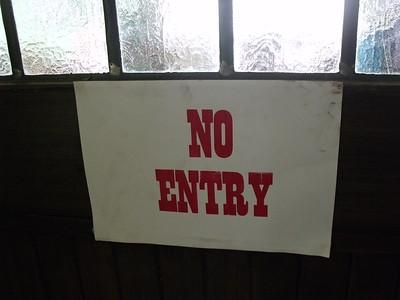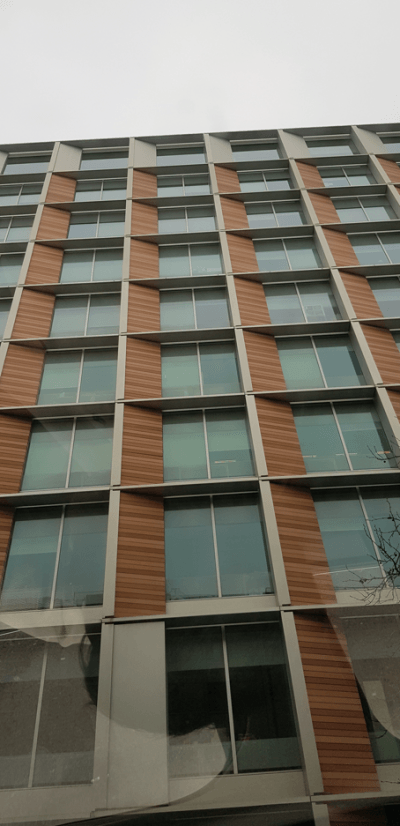Lease Variation and Fire Safety
We’ve recently published a comprehensive study of how the Landlord and Tenant Act 1987 (LTA 1987) power to vary long residential leases has been exercised (2019 Conveyancer 332). The study grew out of research mapping how the way that flats are owned and managed, mediated by property law, makes it difficult to upgrade blocks of flats to improve environmental performance. We were interested in whether it is easy to get around these problems by varying leases, and how often this is done. The short answer is that variation is not straightforward and there is only a small number of cases in which leases have been altered to permit ‘improvements’ to be made. This post considers whether it might be possible to vary leases to help with some of the fire safety issues that have arisen in the aftermath of the Grenfell fire.
Posted:
Time to read:

Flats are not isolated units but are interconnected as part of a wider built environment. For a building to be made safe freeholders need to be able to take action not only in relation to the common parts but also in individual flats. Freeholders wanting to act are finding that it is often unclear from leases whether they have powers to enter individual flats to inspect for fire safety risks, or to take corrective action such as removing unsafe building products from privately owned balconies or to retrofit sprinklers. Can leases be varied to enable or clarify these rights?
When can a lease be varied?
The LTA 1987 lease variation provisions were introduced following the Nugee Committee, which had reported problems arising from unsatisfactory leases. It was intended to deal with clear ‘defects’ in leases arising from bad drafting (e.g. no repair and maintenance obligations), but also to enable modernisation of old leases.
Using the LTA 1987 it is possible to apply to a Tribunal for variation of all leases in a building even where some parties do not consent. This is surprising: we think of contractual rights as being voluntary undertakings, entered into for self-interested ends, but this jurisdiction to vary leases enables rights to be altered, even if some parties object, in order to support a broader social goal. Admittedly, a Tribunal must approve the change, but it is nonetheless an unusual power.
There are two routes to variation using the LTA 1987. Section 35 addresses the problem of ‘defective’ leases – that is, leases which ‘fail to make satisfactory provision’ with respect to one of six specific grounds:
- repair or maintenance of the building/flat;
- insurance;
- repair or maintenance of any installations;
- the provision or maintenance of any services which are reasonably necessary to ensure that occupiers enjoy a reasonable standard of accommodation;
- recovery of expenditure;
- the computation of a service charge payable under the lease (but only, as case law shows, where there is either under or over-recovery under the lease, i.e. the Tribunal cannot order variation where precisely 100% of expenditure is already recoverable, even if the current split between leaseholders may appear unjust.
Unless one of these grounds exists, no variation can be ordered. It is, however, possible for new grounds for variation can be added by regulation under s.35(2)(g). This is discussed below.
Section 37 LTA 1987 is not tied to specific grounds. Rather, the only requirement is that ‘the object to be achieved by the variation cannot be satisfactorily achieved unless all the leases are varied to the same effect’. However, because of this broader jurisdiction, a majority of the parties to the relevant leases must approve. The percentage required depends on how big the block of flats is. For eight or fewer leases, all or all but one of the parties must consent. With nine or more leases, at least 75% must consent, and not more than 10% oppose. Section 37 is, therefore, very different from the much narrower section 35 – the grounds are unlimited, but a majority is needed.
Assuming that these conditions are met, variation is not automatic. The Tribunal has a discretion under section 38 LTA 1987 whether to order the variation. Further, if the Tribunal decides to order the variation, it can also award compensation to those who will suffer loss or disadvantage.
How are the provisions used in practice?

In our study we reviewed all reported decisions that we could find (268 in total). The more detailed findings are contained in our full article but, in outline, we discovered the following.
- Landlords were responsible for most of the applications, either alone or supported by leaseholders. Only 15% of applications were from leaseholders alone (although some landlord applications were by resident controlled companies or supported by leaseholders).
- Applications for variation were usually successful (over three quarters of applications succeeded), with the most frequent cause of failure being that the Tribunal lacked jurisdiction.
- Applications were brought for a wide range of reasons. The most common related to the under or over recovery of service charges (due to the need to correct arithmetical errors, to address a change in circumstances, or some other oversight). Many other common applications under section 35 involved ensuring the leases contained adequate repair and maintenance provisions.
- Applications under s. 37 were wider ranging. They included a mix of variations aimed at updating outdated leases and enabling modernisation. We found examples of variations allowing for a video entry system, removing the requirement for a live-in warden, and removing communal heating systems. Notably, a number of applications sought to add a clause to the lease allowing for ‘improvements’ to be made to the building (fitting with our initial intrigue about whether varying leases might help to enable energy upgrades to be made). These ‘improvement’ variations were not permitted using section 35 LTA 1987, but might be made pursuant to majority approval under section 37 LTA 1987.
Can leases be varied to address fire safety concerns after Grenfell?

As mentioned above, a major reason for the implementation of the statutory jurisdiction was to ensure that defective leases could be amended, and older leases modernised. Can leases be varied using the LTA 1987 to, for example, provide landlords with the right to enter flats to inspect for fire safety risks; to install, inspect, or change fire doors; to remove unsafe material from balconies; or to install sprinklers?
None of the cases in our sample considered the provisions being used in this way, and it is uncertain whether the legislation as currently framed would allow for these variations. These variations could be achieved through obtaining majority approval under section 37, but achieving this majority may prove difficult or impracticable, particularly where the changes would involve leaseholders bearing additional costs.
That leaves section 35. As the law stands, it is arguable that section 35 could be used to introduce the fire safety variations above. There’s a possibility that some of the necessary measures might be seen as being to do with ‘repair or maintenance’, but the general approach taken to these terms is that ‘repair’ requires some kind of deterioration from a previously better condition, and maintenance is more to do with keeping in repair. Perhaps section 35(2)(d) offers possibilities? Maybe a lease lacking fire safety features fails to make satisfactory provision in respect of ‘the provision . . . of any services which are reasonably necessary to ensure that occupiers of the flat enjoy a reasonable standard of accommodation’ under. Indeed, section 35(3) provides that, in determining what is a reasonable standard accommodation, relevant factors include ‘factors relating to the safety and security of the flat and its occupiers’. The difficulty with this argument is, however, that in the examples we have used above it is not obvious that what landlords need the power to do would count as ‘services’. And, for all of the section 35 grounds, the Tribunal needs to be persuaded that the lease currently fails to make ‘satisfactory provision’ with respect to that ground.
The authors’ view, informed by our extensive study of FTT decisions, is that the fire-safety variations proposed above come within the spirit of what the variation jurisdiction was intended to enable. This is because:
- the clear purpose of the legislation is to enable defects to be addressed;
- an absence of provisions enabling fire-safety measures to be provided would, in our view, render a lease defective;
- allowing such a variation is within the clear policy objectives of the legislation; and
- as such, a purposive construction of the legislation should enable these kinds of variations to be made.
But we admit that the current wording of the lease variation provisions is not clear, and it is uncertain whether our argument would be accepted by the courts. Accordingly, the Secretary of State should exercise the power under section 35(2)(g) to introduce an additional ground to enable fire-safety variations. These regulations should clearly articulate the policy impetus underlying the new regulations, and thereby empower Tribunals to adopt a robust construction designed to give effect to Parliament’s intention.
__________
How to cite this blog post (Harvard style)
Bright, S. & Morrison, P. (2019). Lease Variation and Fire Safety Available at: https://www.law.ox.ac.uk/housing-after-grenfell/blog/2019/12/housing-after-grenfell/blog/2019/12/lease-variation-and-fire-safety (Accessed [date])
Share:
